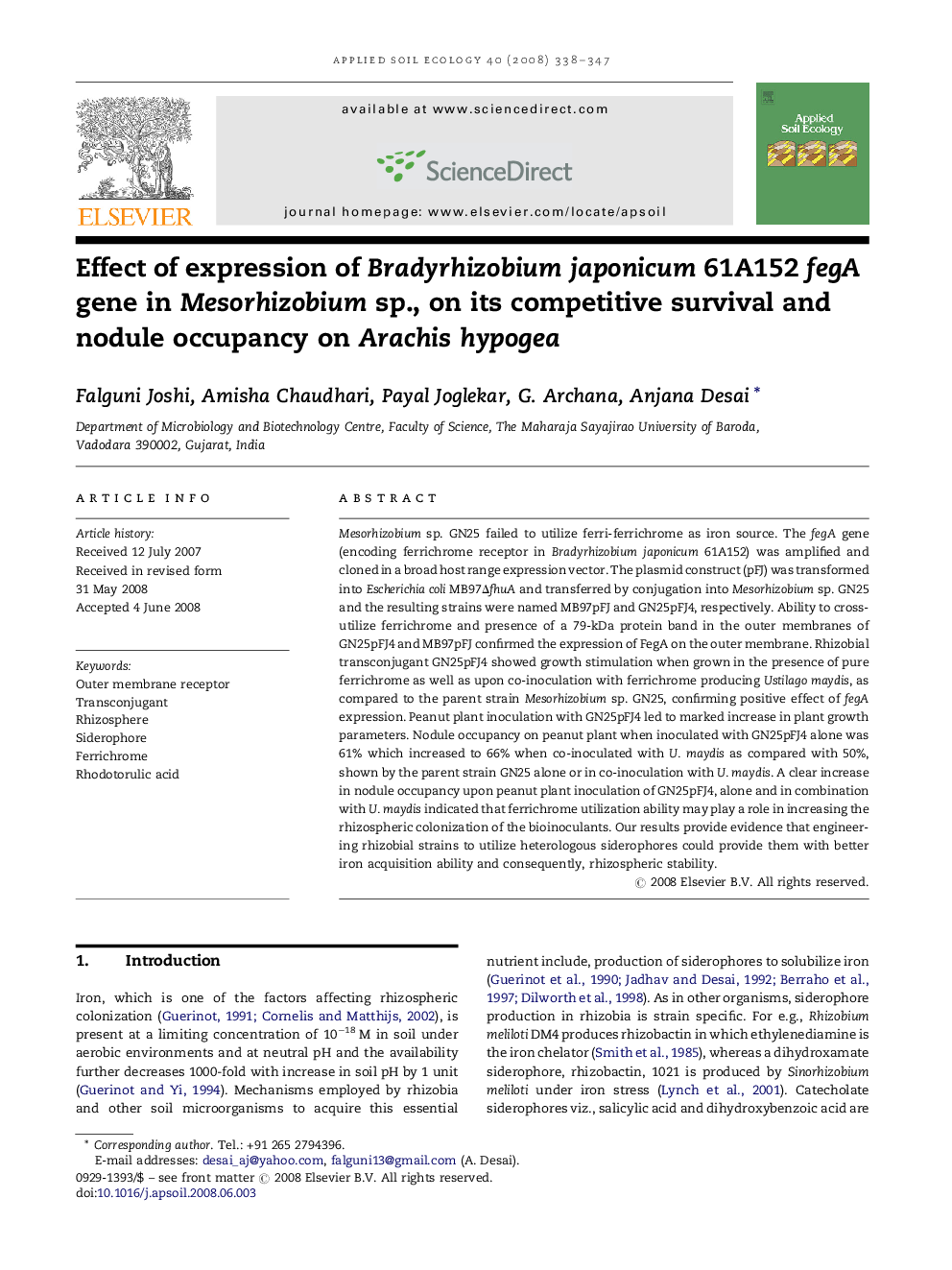| Article ID | Journal | Published Year | Pages | File Type |
|---|---|---|---|---|
| 4383139 | Applied Soil Ecology | 2008 | 10 Pages |
Mesorhizobium sp. GN25 failed to utilize ferri-ferrichrome as iron source. The fegA gene (encoding ferrichrome receptor in Bradyrhizobium japonicum 61A152) was amplified and cloned in a broad host range expression vector. The plasmid construct (pFJ) was transformed into Escherichia coli MB97ΔfhuA and transferred by conjugation into Mesorhizobium sp. GN25 and the resulting strains were named MB97pFJ and GN25pFJ4, respectively. Ability to cross-utilize ferrichrome and presence of a 79-kDa protein band in the outer membranes of GN25pFJ4 and MB97pFJ confirmed the expression of FegA on the outer membrane. Rhizobial transconjugant GN25pFJ4 showed growth stimulation when grown in the presence of pure ferrichrome as well as upon co-inoculation with ferrichrome producing Ustilago maydis, as compared to the parent strain Mesorhizobium sp. GN25, confirming positive effect of fegA expression. Peanut plant inoculation with GN25pFJ4 led to marked increase in plant growth parameters. Nodule occupancy on peanut plant when inoculated with GN25pFJ4 alone was 61% which increased to 66% when co-inoculated with U. maydis as compared with 50%, shown by the parent strain GN25 alone or in co-inoculation with U. maydis. A clear increase in nodule occupancy upon peanut plant inoculation of GN25pFJ4, alone and in combination with U. maydis indicated that ferrichrome utilization ability may play a role in increasing the rhizospheric colonization of the bioinoculants. Our results provide evidence that engineering rhizobial strains to utilize heterologous siderophores could provide them with better iron acquisition ability and consequently, rhizospheric stability.
